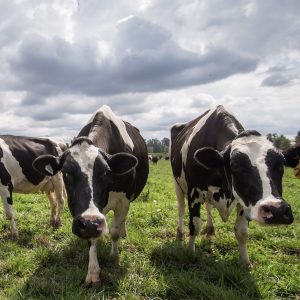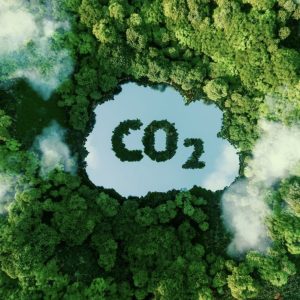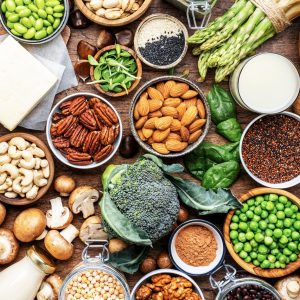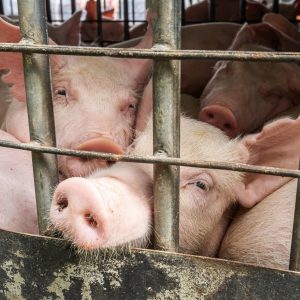The Plant Plan
Benefits

For the planet

In a world where we can see and feel the consequences of a changing climate, many people feel powerless. What are we to do? Sell our car and take the bus? Do we stop heating our houses? Do we never go on an airplane again? While there are sound arguments to be made for all of these, there is one thing that proves to be more impactful in the short run than ANYTHING else you can do. Can you guess what it is? It is making changes to what you put on your plate!
Livestock farming has a vast environmental footprint. It contributes to land and water degradation, biodiversity loss, acid rain, coral reef degradation and deforestation. It contributes to 18% of human- produced greenhouse gas emissions worldwide. This is more than all emissions from ships, planes, trucks, cars and all other transport put together! The environmental impact from ruminants (beef, sheep, and goats) is particularly bad because they produce methane, which is about 80 times more potent at trapping heat than carbon dioxide.
More about methane
Often when we talk about climate change, the conversation centres around reducing our carbon footprint. This inevitably points to carbon dioxide being the main challenge, often missing the fact that CO2 is not the only greenhouse gas heating our home planet.
Methane, a less known greenhouse gas, has been responsible for around 30% of the rise in global temperatures since the industrial revolution (Chung, 2021, Methane emissions are driving climate change, UNEF). And while there are natural sources of this greenhouse gas, around 60% of methane is directly caused by human behavior (Borunda, 2019, Methane, Explained, National Geographic). This explains the massive spike we can see, and it will only increase unless we change our ways.
Why is this important?
Our planet is heating up and the effects that is having are growing at an exponential rate. Melting ice sheets, warming oceans, a dramatic increase in catastrophic weather events like hurricanes, wildfires, deadly heatwaves, and droughts. They all have one common denominator and that is HEAT.
The rising temperatures have set in motion our planet’s own natural warming mechanisms that are now feeding upon themselves causing an exponential growth in climate related disasters. For example, as the planet warms, ice at the poles melts which decreases the reflectivity of the sun back into space and releases methane-producing microbes that were frozen in the permafrost for millions of years, both of which further speeds the warming of the planet. Methane is like adding gasoline to an already roaring bonfire – but it can also act as the fire extinguisher.
So, what is so special about methane? It is a short-lived gas, which, fresh in the atmosphere, heats 120 times more efficiently than CO2. In contrast to carbon dioxide, which lingers in the atmosphere for hundreds, if not thousands of years, methane has a lifespan of only 12 years until it combines with oxygen (oxidizes) to form more CO2 (Balcombe et al, 2018, Methane emissions: choosing the right climate metric and time horizon). Because methane is a short-lived gas AND we emit so much of it, simply by decreasing methane we can dramatically slow the warming of earth. This is important as we may already be in the process of causing irreversible damage to the life supporting systems that sustain not just humans but also the millions of other creatures we share this beautiful blue and green planet with (Richardson et al, 2023, Earth beyond six of nine planetary boundaries.

Where does methane come from?
Methane is a naturally occurring greenhouse gas which has been a part of our atmosphere for billions of years. Just like CO2, there is nothing inherently bad about methane. In fact, we would have an inhabitable planet if not for greenhouse gases absorbing the sun’s heat, keeping it in the atmosphere and in the process setting the scene for our “just right” Goldilocks home.
Most of methane’s natural emissions come from wetlands where some microbes produce Methane, just as mammals breathe out carbon dioxide. This accounts for 1/3 of all the methane in the atmosphere. The remaining “naturally” occurring methane comes from a mix of thawing permafrost, the ocean floor, burning landscapes and termites (Borunda, 2019, Methane, Explained, National Geographic).
The majority of methane, however, is human caused or “anthropogenic” in nature. In other words, modern life is responsible for a more than doubling of methane in the atmosphere over the past 200 years. This explains why up to 30% of the warming of our planet can be attributed to methane.
A dangerous appetite
Of the anthropogenic methane emissions, the vast majority can be attributed to our insatiable appetite for beef, as livestock production accounts for roughly 1/3 of total methane emissions (Chung, 2021, Methane emissions are driving climate change, UNEF)! This is due to the digestive systems of ruminants, which include microbes that help them break down and absorb the nutrients from tough grasses. These microbes produce methane as their waste, which is released out of both ends (yes, either as burps or farts). This is what is referred to as “enteric fermentation.” In addition, the livestock waste creates perfect conditions for methane-emitting microbes.
With population growth, economic development, and urban migration, the demand for animal protein is only increasing. Estimates are that by 2050 the demand will be 70 per cent higher than today (Chung, 2021, Methane emissions are driving climate change, UNEF).

For you

A plant-based diet focuses on fruits, vegetables, grains, beans, peas, lentils and nuts. It’s rich in fibre, vitamins and other nutrients. And people who don’t eat meat generally eat fewer calories and less fat. They also tend to have lower cholesterol and blood pressure. On the other hand, high meat consumption, especially of red and processed meat, is linked with poor health outcomes including heart disease, stroke, diabetes and various cancers. Additionally, all the antibiotics we are feeding the livestock is leading to thousands of preventable deaths each year due to antibiotic resistance.
Curious? Find out more here:
www.health.harvard.edu/blog/what-is-a-plant-based-diet-and-why-should-you-try-it-2018092614760

For the animals

Cruelty to farm animals in agriculture includes inhumane practices in concentrated animal feeding operations (CAFOs) or factory farms, such as overcrowding in small cages or crates, painful mutilations without anesthesia (like tail docking or dehorning), and separation of young animals from mothers. These conditions, driven by cost-efficiency, lead to compromised animal welfare and can necessitate the routine use of antibiotics to prevent disease.
Decreasing the demand for these animals by consuming less meat and fewer dairy products will help to prevent the inhumane practices that these animals endure.
Here are some helpful sites where you can learn more:
From delicious recipes to informative books and podcasts, you’ll find lots here to nourish your body and feed your mind.
We’re not the only ones promoting plant-based! Discover other initiatives, campaigns, and events that you can take part in.
